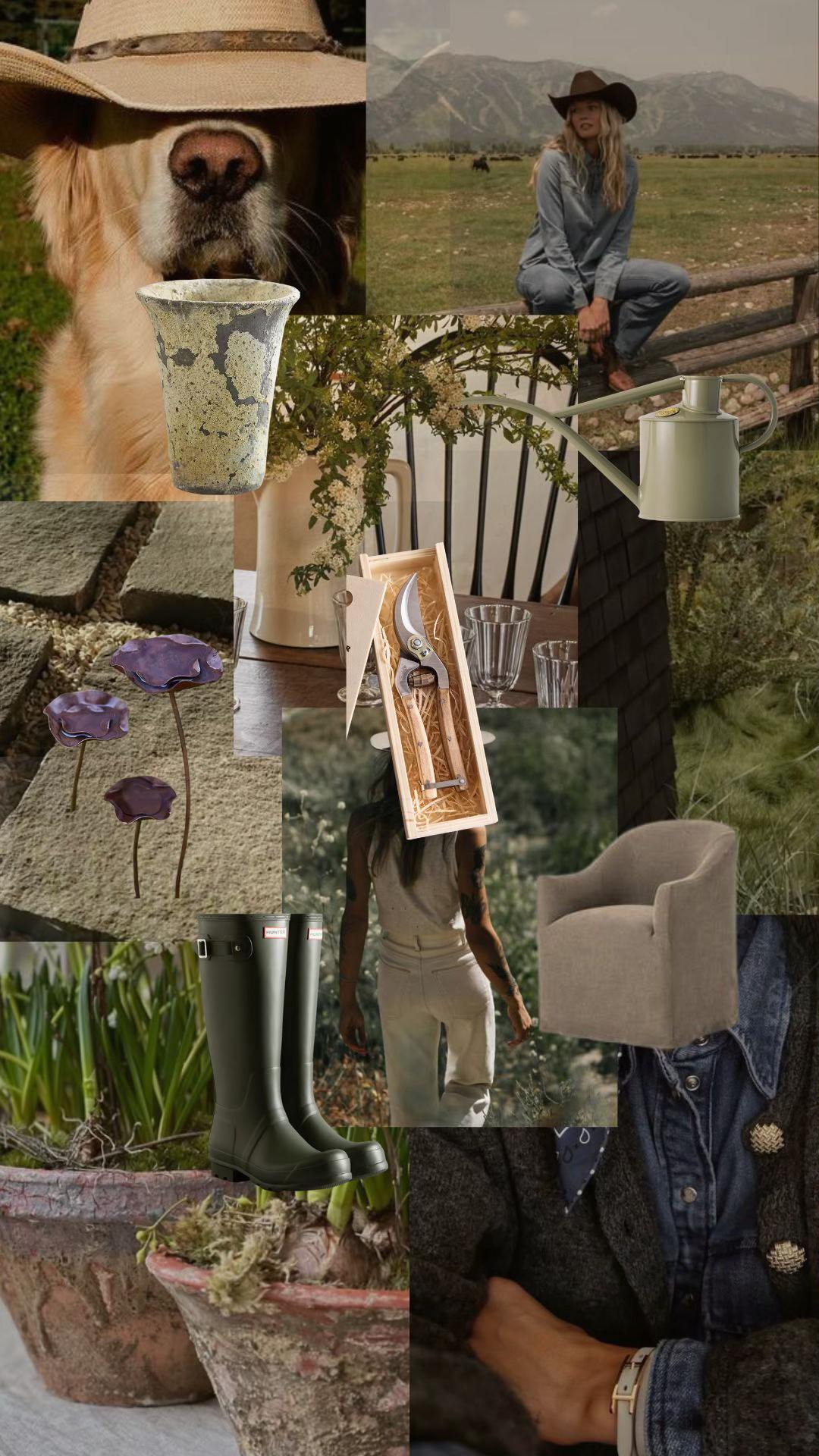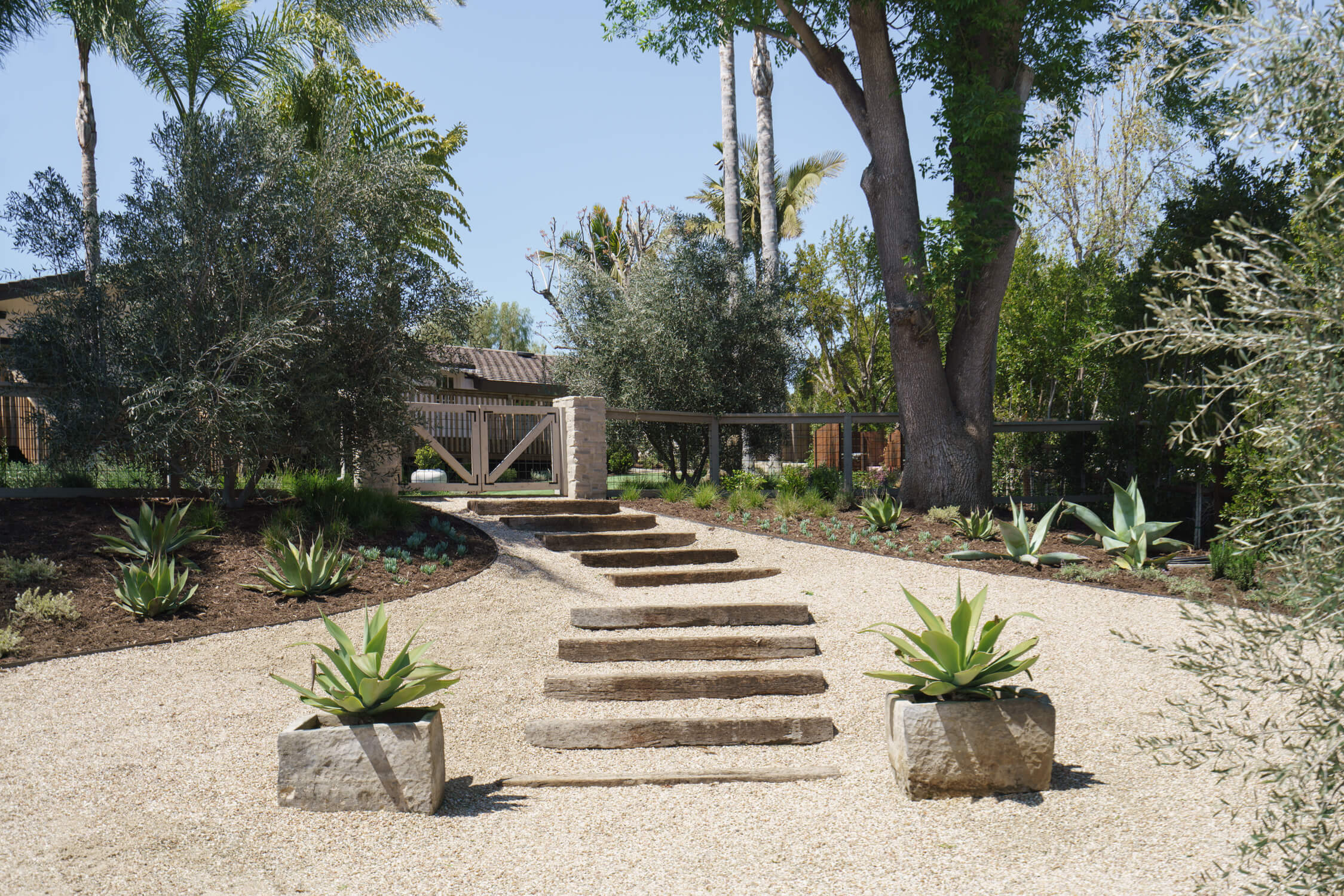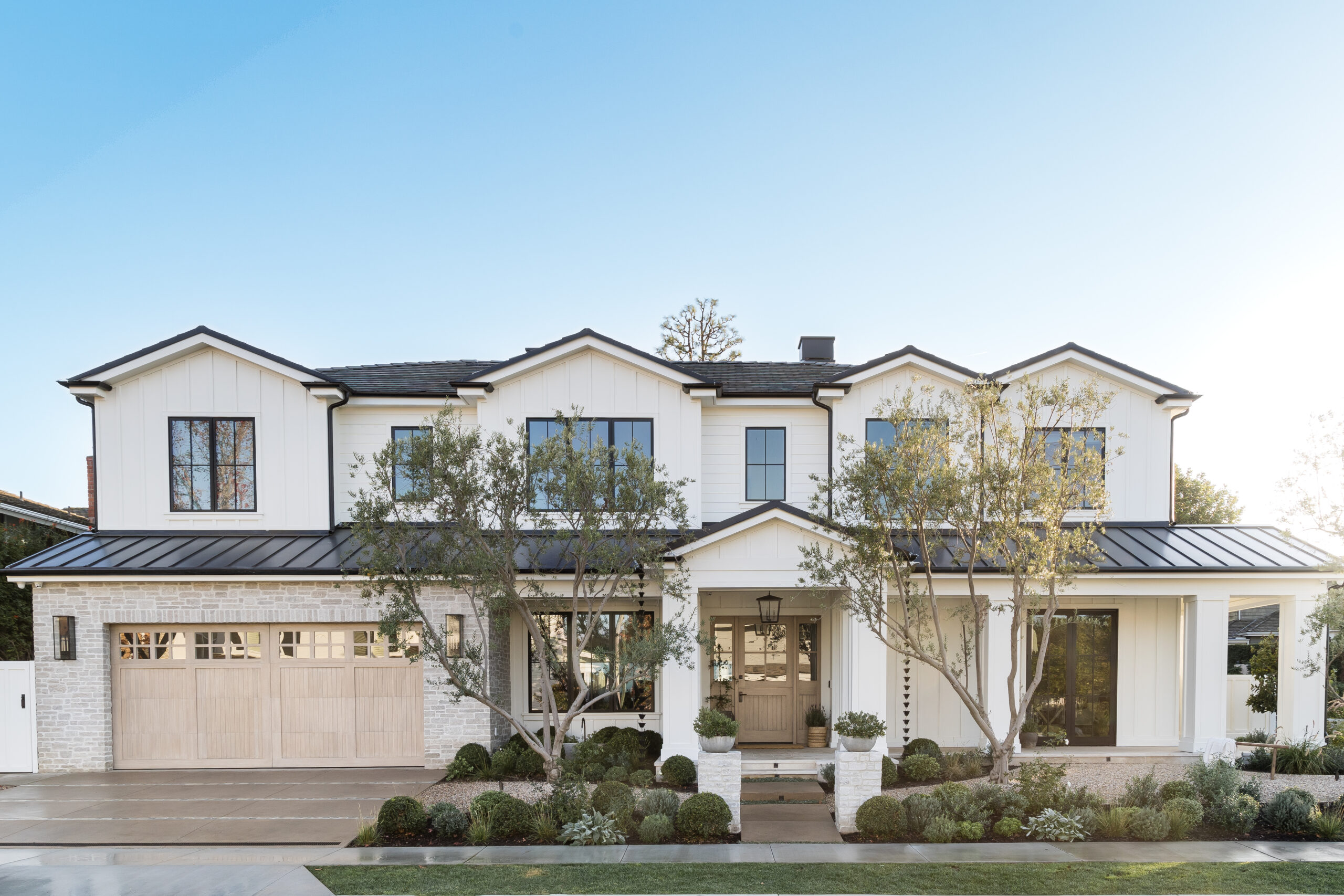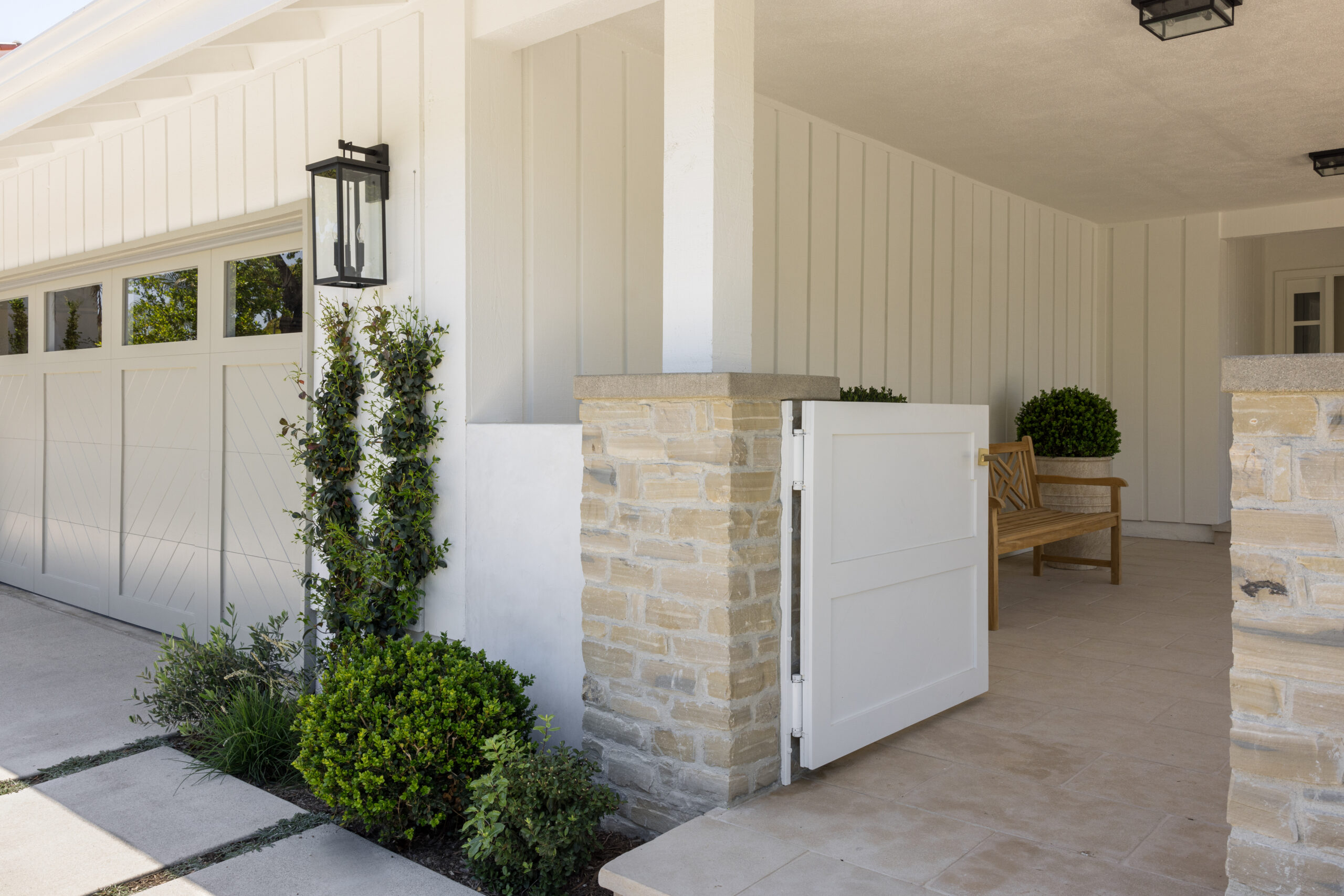Dreaming of a European-inspired garden but unsure where to start? You are not alone! Many homeowners, including a vast majority of our clientele, are drawn to the effortless charm of these timeless spaces, especially as old-world aesthetics continue to influence home design.
While it takes a thoughtful approach to seamlessly integrate these elements into modern landscapes, you most certainly do not need a centuries-old villa or sprawling estate to achieve the look. In fact, even the most intimate spaces will work beautifully with this aesthetic! With the right design choices and a focus on key elements, anyone can create an outdoor destination that feels just as timeless, intimate, and unique as a European Garden. Our team specializes in blending classic European influence with modern functionality (it’s where we get most of our inspiration, after all), so we are especially excited about this write up! Keep reading to explore our favorite elements and discover how to bring European charm into your own outdoor space—no passport required.
1. Use Stone and Texture to Create a Timeworn Foundation
A European garden starts with a solid foundation. The key is to choose materials that feel like they have been there forever. If you want to recreate the look, consider incorporating cobblestone driveways and accents, slurried stone walls, or limestone pavers softened by creeping greenery. A light slurry wash over walls and pathways adds a soft, aged patina that instantly makes a space feel established. If a full stone installation is not an option, start small with a natural stone border, gravel pathways, or a single feature wall to introduce the look.
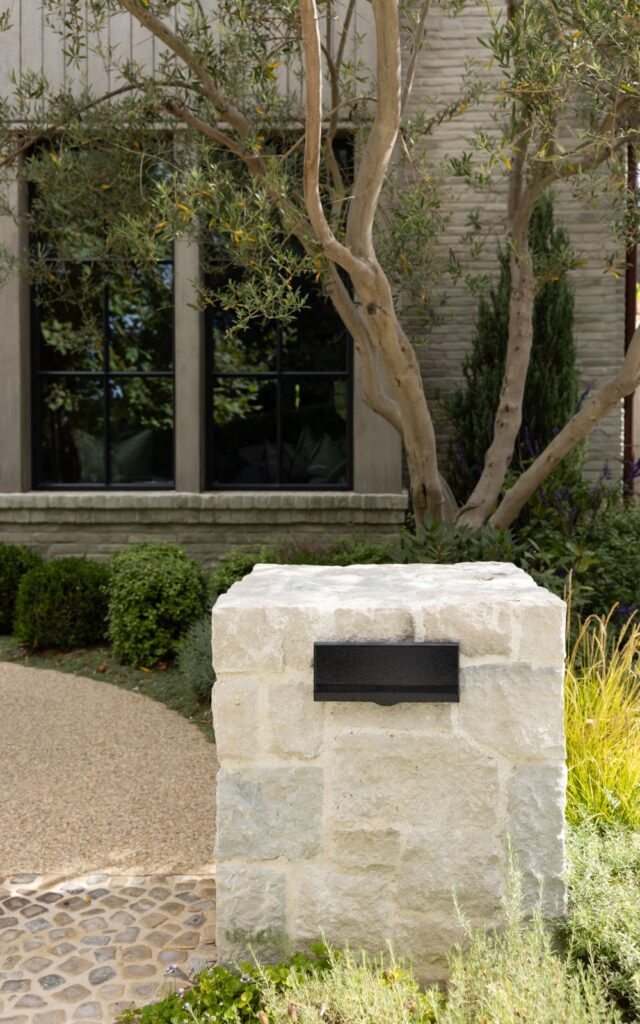
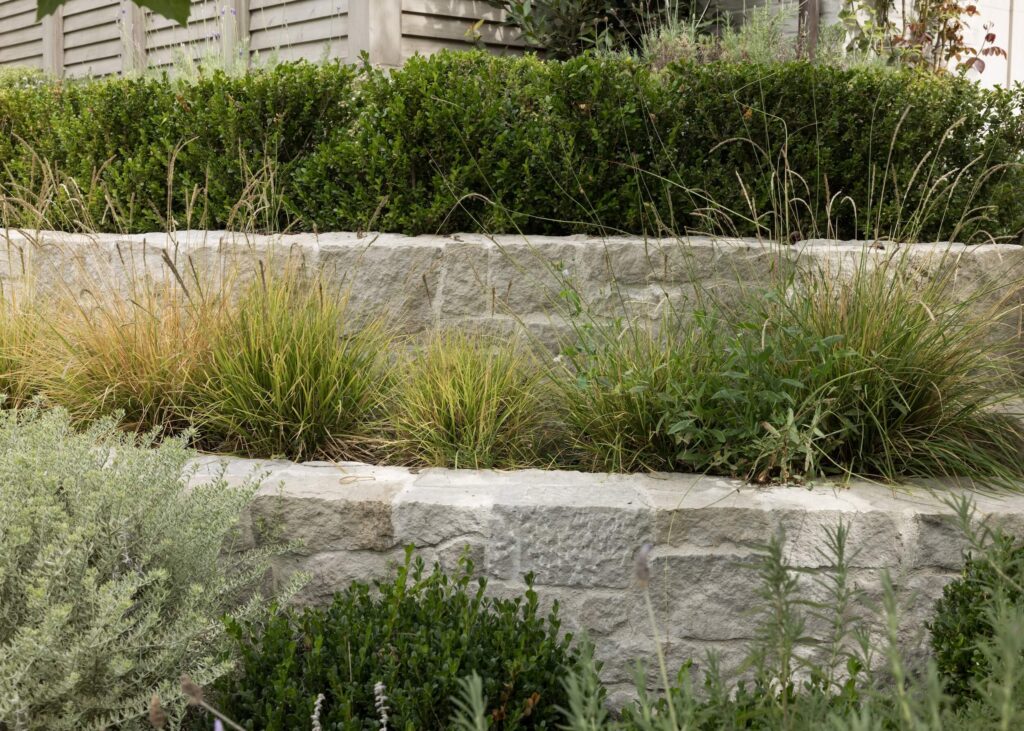
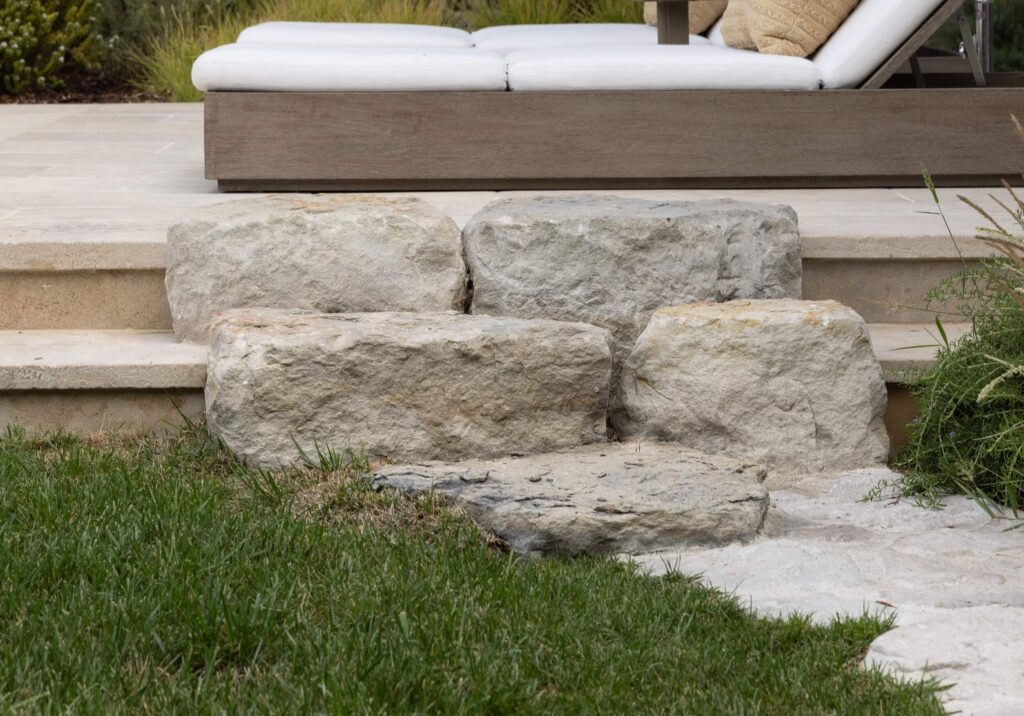
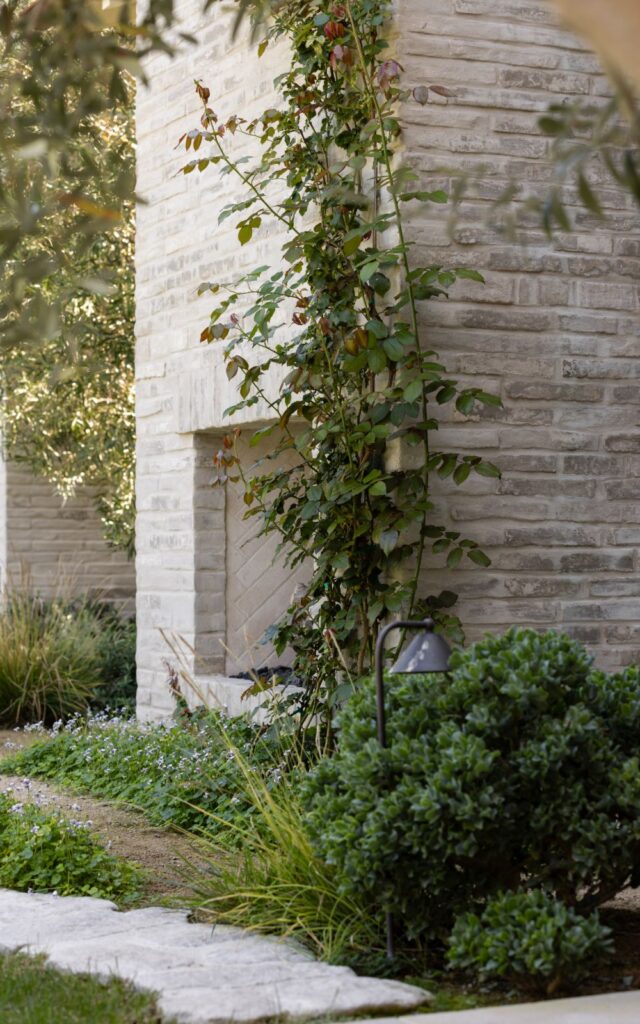
Pictured above: Stone and hardscape moments from our Sycamore Estate Project, featuring slurried limestone and natural brick accents.
2. Define the Space with an Enclosed, Intimate Feel
One of the most distinctive elements of a European courtyard is its sense of seclusion. If you want to create that cozy, tucked-away feel, consider adding a rustic wooden fence, a low stone wall, or an antique-style iron gate. These elements provide a beautiful frame for your garden while offering privacy and structure. For smaller spaces, climbing vines or potted plants can act as natural dividers, helping define areas without the need for permanent construction.
Pictured below: Custom wood slatted fencing seen at our Cabin On The Coast Project is reminiscent of the fencing found throughout the rolling hills of the European countryside.
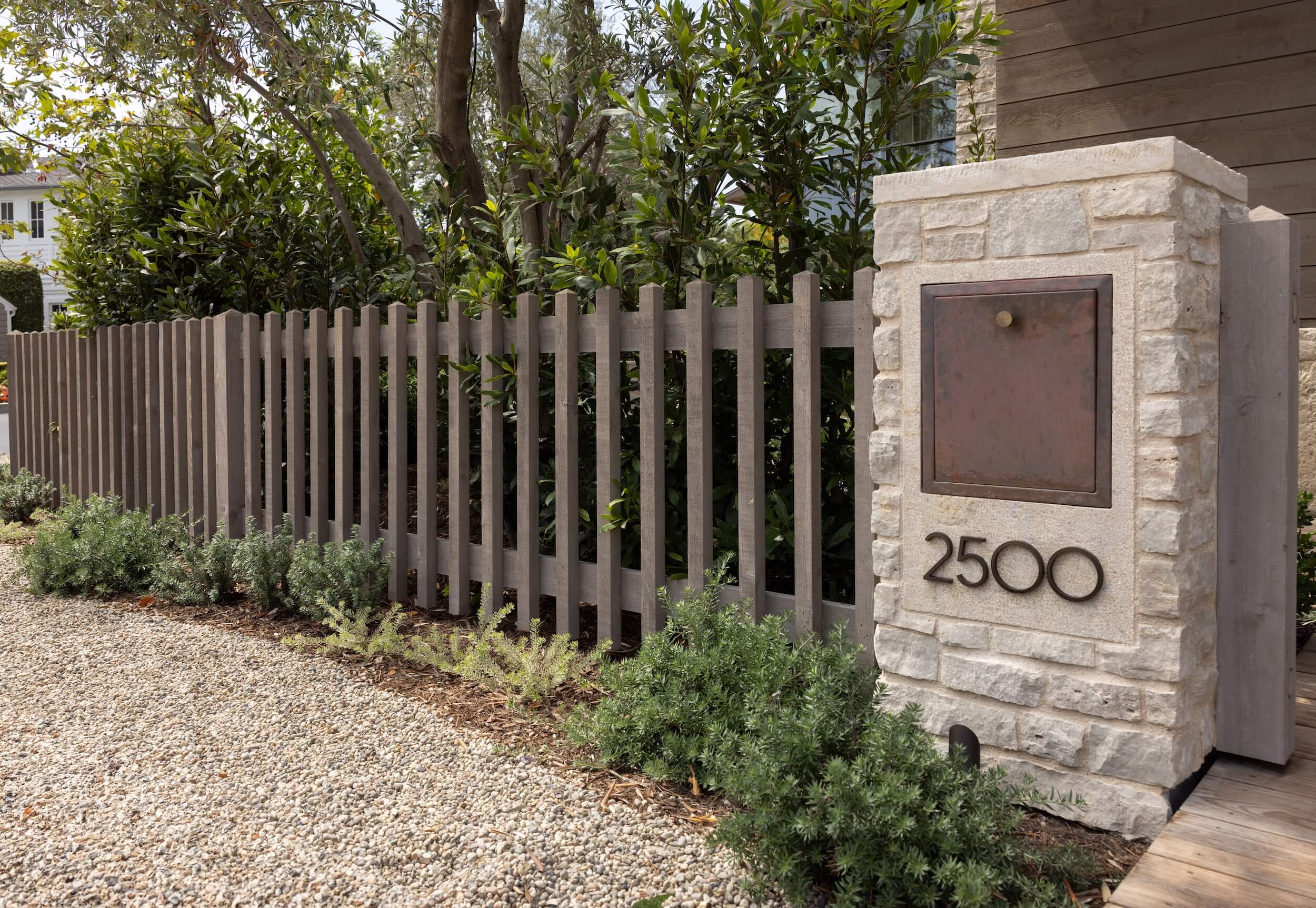
3. Layer Greenery for a Natural, Lived-In Look
European gardens are all about relaxed layering. If you want your space to feel lush but intentional, mix different heights and textures of plants. Climbing vines, like jasmine or wisteria, can soften walls and pergolas, while potted herbs such as rosemary and thyme add both fragrance and function. Olive or citrus trees in oversized urns bring in a Mediterranean touch and work beautifully in courtyards. Even if you are working with a smaller space, a few terra cotta pots with lavender or topiaries can capture the same effortless charm.

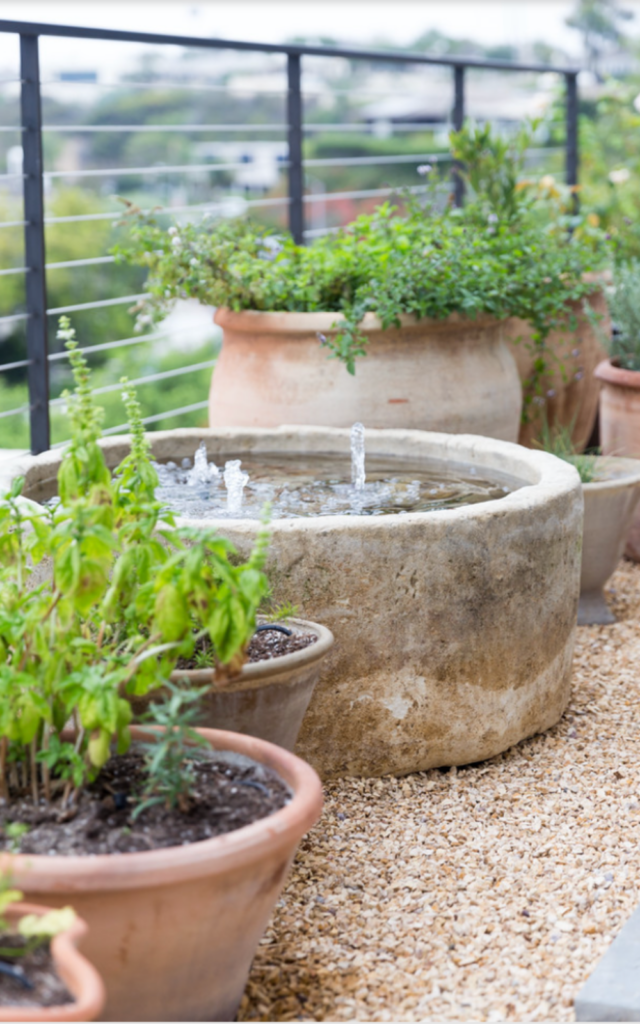
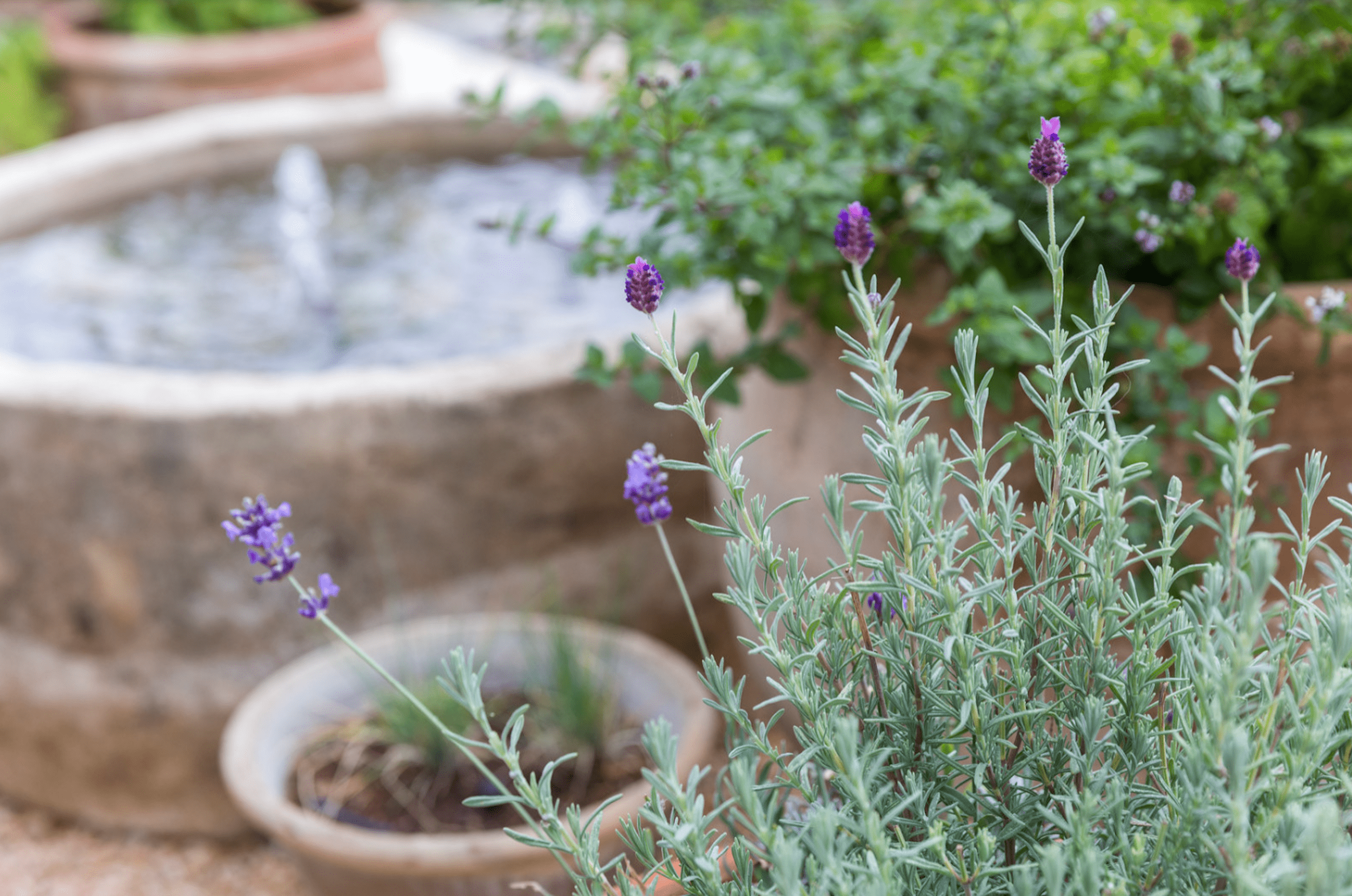
Pictured above: Potted herb garden with limestone accents and climbing vines adorn our Irvine Terrace Project.
4. Add a Water Feature for an Authentic Touch

Pictured above: Inspired by Tuscany estates, our Marbella Project features a grand spigot water feature as the focal point of the entry, complimented by surrounding layered greens and a gravel base.
No European courtyard garden is complete without the soothing sound of water. A stone fountain, a simple wall-mounted basin, or even an antique trough repurposed as a bubbling water feature can instantly enhance the ambiance. If space or budget is a concern, a wall-mounted basin or a simple trough fountain can still introduce the gentle movement and tranquility of water without overwhelming the space. When selecting materials, opt for aged limestone, copper, or patinaed stone to maintain the authentic, timeworn aesthetic.
5. Design a Dining Space That Invites Connection
A European courtyard is not just for admiring; it is meant to be enjoyed. Whether you have room for a full outdoor dining area or just a cozy café table with bistro chairs, create a space that invites conversation and relaxation. A weathered stone or wood dining table under a canopy of climbing vines is perfect for long, leisurely meals. Lanterns, sconces, or string lights can add a warm glow, making the space feel inviting from day to night. Even if you are working with a small patio, a simple seating nook with a few well-placed accents can bring in that European charm.

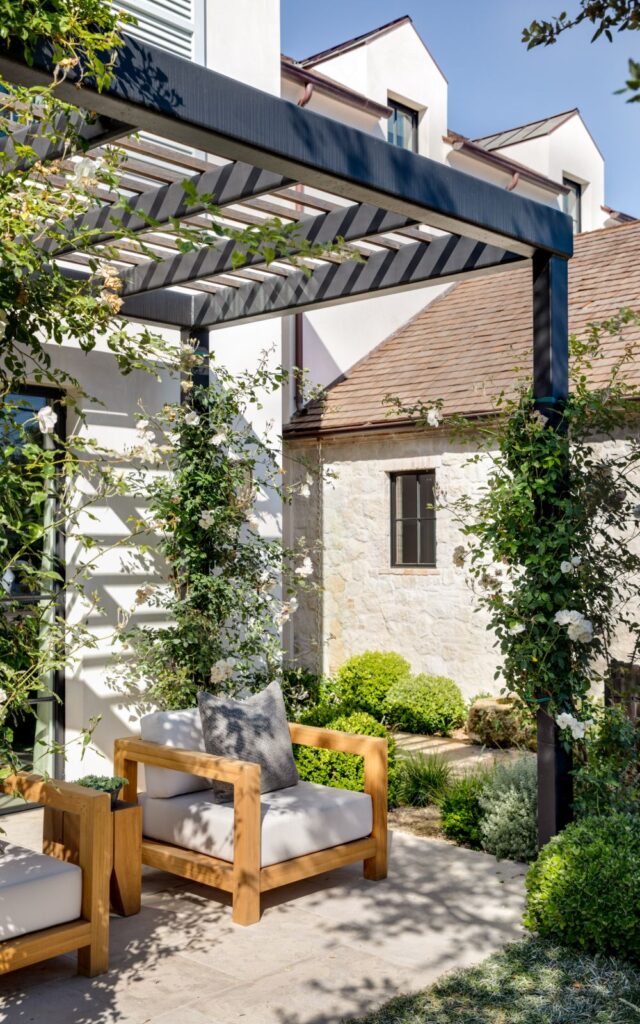
Pictured above: Dining and entertaining spaces designed into our East Side Tavern Project are accompanied by climbing vines and covered spaces to entice languid evenings spent in good company.
Bringing It All Together
A European courtyard garden is about creating a space that feels personal and timeless. Whether you start with a single accent, like a climbing vine, or embrace the look with stone pathways and intimate seating, the key is to let it evolve naturally.
Small changes can have a big impact, so start where you can and build from there. For more landscape ideas and inspiration, explore our other blog posts filled with design techniques and outdoor styling tips.
Until next time!
– Team GSD
Lorem ipsum dolor sit amet, consectetur adipiscing elit. Ut elit tellus, luctus nec ullamcorper mattis, pulvinar dapibus leo.
